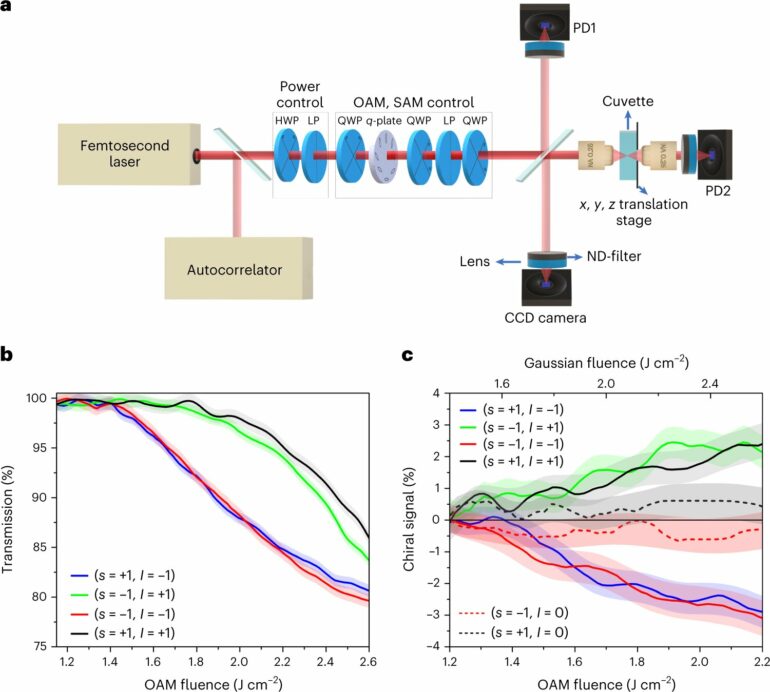It was believed that it was impossible to differentiate the enantiomers of a chiral molecule using helical light beams—until now that is, thanks to a group of uOttawa researchers.
For nearly 20 years researchers believed that it was not possible to differentiate the enantiomers of a chiral molecule using helical light beams. Enantiomers are mirror images of a molecule that cannot be superimposed, like our left and right hands that cannot appear identical simply by reorientation. In addition, molecules with symmetrical properties such as achiral molecules are not expected to show any dependence on the helicity of light.
Yet this is what a group of researchers at the University of Ottawa have done.
The team, led by Professor Ravi Bhardwaj and his Ph.D. students Ashish Jain and Jean-Luc Bégin, with the collaboration of professors Thomas Brabec, Ebrahim Karimi from the uOttawa Nexus for Quantum technology Institute, and Paul Corkum, Canada Research Chair in Attosecond Photonics, developed a new chiroptical technique to differentiate the two non-superimposable mirror images of a chiral molecule. Its efficiency can even be scaled and controlled by using linear polarized helical light beams.
“Our understanding of light-matter interactions is mainly based on the propagation of homogeneously polarized light and the dominance of the dipole-active transitions between different quantum states of matter,” explained Jean-Luc Bégin. “The higher-order multipole effects are often ignored. Our findings demonstrate their importance.”
Their main findings include:
Enhanced chiral sensitivity can be observed directly using linearly polarized helical light beams without any intermediary.Differential absorption of left- and right-asymmetrical helical light can be observed even in achiral molecules that can be scaled and precisely controlled.Helicity dependent absorption of light arises due to coupling of electric dipole and electric quadrupole moments and can be tuned by changing laser polarization.
“Detecting enantiomers with enhanced sensitivity is essential in the pharmaceutical industry to eliminate the unwanted side effects of a drug,” added Ashish Jain. ” Moreover, the control of light-matter interactions demonstrated by us with helical light potentially opens new opportunities in spectroscopy, light-driven molecular machines, optical switching and ultrafast probing of magnetic materials”.
The study was published in Nature Photonics.
More information:
Jean-Luc Bégin et al, Nonlinear helical dichroism in chiral and achiral molecules, Nature Photonics (2022). DOI: 10.1038/s41566-022-01100-0
Provided by
University of Ottawa
Citation:
Researchers solve 20-year-old optical light mystery (2022, December 1)



